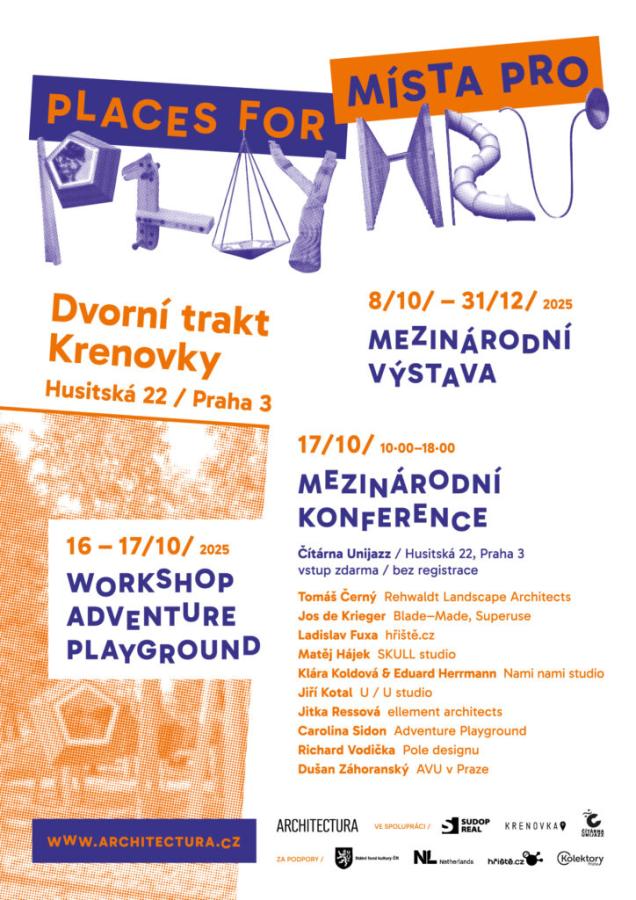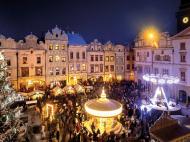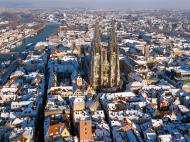Place:
Artcentrum Krenovka
Date:
8/10/2025 - 31/12/2025
Price:
?
Web:
International exhibition in the courtyard of Krenovka.
In the last third of the past century, children's playgrounds began to emerge in our country, featuring entertainment and often artistic elements, with contributions from artists and landscape architects (for example, Zdeněk Němeček, Olbram Zoubek, and Eva Kmentová in Prague, Kurt Gebauer in Ostrava, Miroslav Jirava in Krnov, Vladimír Sitta, Tamara Divišková, or Zdeněk Macháček in Brno, Roman Richtermoc and Oldřich Semrád in Hradec Králové). They were often solitary but frequently became icons, and many have recently undergone restoration, albeit under the new status of artistic works rather than play elements. At the end of the 1990s, there was a boom in standardized and not always creative, but primarily materially or aesthetically uninteresting play elements. This average production prompted a reason to reassess the quality production of previous years and also, especially among artist-parents, architects, and landscape architects, a strong need to change the situation. A significant contribution to this is also made by examples of successful implementations abroad, often signed by renowned authors and awarded in international architectural and urban exhibitions that focus on the revitalization of public spaces. The phenomenon of the Adventure playground (a concept of an unfinished playground that children build themselves under the supervision of instructors), which originated in Denmark in the 1940s and has become a common practice in the European context over the following eighty years, is also becoming known among Czech parents, educators, and municipal politicians. Additionally, many scientific playgrounds, educational-sporting elements in nature, as well as skateparks and spaces for parkour are being created.
CONTINUE READING
The Herbal Cup Sauna is once again heading to Aquapalace Prague.
From November 26 to 30, 2025, Aquapalace Prague will transform into the Mecca for all lovers of natural sauna experiences. One of the most anticipated sauna events of the year will take place here in the largest Sauna World in the Czech Republic – the jubilee 10th edition of the Sauna Herbal Cup 2025. You will have the opportunity to meet the absolute top of this field from around the world during the international festival of healthy sauna practices, as well as the World Championship in natural sauna ceremonies, peeling procedures, and herbal rituals.
Christmas inspiration: Gift ideas that will delight.
It's here again – the lights, the smell of Christmas cookies, and the first notes of carols. Christmas is approaching faster than we expected, along with the annual question: how to delight our loved ones, colleagues, or business partners this year? To make your selection easier, we have prepared a collection of the best tips for Christmas and corporate gifts. So sit back comfortably, and let's get inspired together – so you can shop stress-free and on time this year.
Autumn VIVOplaying, or the board game festival
Are you wondering where and how to have fun with the whole family this autumn? How about board games that the whole family can enjoy?
ADVENT WITH THE SCENT OF GINGERBREAD: THE RIGHT STOP ON THE JOURNEY TO CHRISTMAS
Pardubice transforms during this period into a place where history blends with the scent of cinnamon, honey, and Christmas treats. When the Christmas tree lights up, the festive decorations are set up, and the characteristic smell of gingerbread wafts through the streets, the atmosphere reminds us that Christmas doesn't have to be just about rushing, but also about moments that have their own magic. The Christmas markets at Pernštýnské Square.
REGENSBURG, CITY OF CHRISTMAS WONDERS
During the Advent season, Regensburg shines with a special light. When the afternoon plunges into darkness and the air is filled with the scent of mulled wine and cinnamon, this UNESCO World Heritage city transforms into a true winter dream. At the Regensburg Christmas markets, people gather to experience the magic of the Advent season in the warm glow of the stalls.
Christmas comes alive in Metropolis Zličín! The Nutcracker, St. Nicholas, and icy fun for the whole family.
The most magical holidays of the year are slowly approaching. Christmas is a time when miracles happen, and this year they will also take place in the Metropole Zličín shopping center. This year, the Nutcracker will come to life there, along with his entire fairy tale world. Throughout the Advent season, visitors can look forward to a program full of creativity, music, dance, skating, and above all, fun for the whole family.






